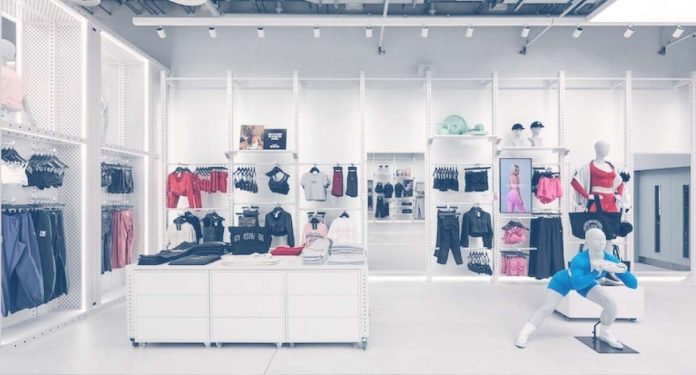Fugo partners with Canto to connect DAM to digital signage, eliminating manual uploads. Gymshark is the first to unify brand content workflows.
Fugo has partnered with digital asset management platform Canto to launch a new integration that connects brand libraries directly to in-store digital signage, eliminating the need for versioned file exports, manual uploads, or patchwork workarounds.
The integration is now live in a retail deployment with Gymshark, the British fitness wear brand, at its flagship White City location in London. Later this year, wider rollouts are planned for locations in Europe and the US.
For Gymshark, the project addresses a familiar challenge in retail marketing: how to keep store screens in sync with brand campaigns and asset updates without involving disconnected tools or workflows. By linking their Canto DAM to Fugo’s CMS, Gymshark’s content and VM teams can now schedule and update in-store screen content using the same library that powers their other brand channels.
“Screens have historically sat outside the rest of the marketing tech stack,” says Nick Ratcliffe, Chief Commercial Officer at Fugo. “They’re a high-impact surface, but the workflows have been siloed. With this integration, we’re trying to bring screens closer to the systems teams already use and trust – starting with DAM.”
Also Read: Jeff Kaplan on AI, Ad Fraud, and the Future of Media Buying
This marks Canto’s DAM’s first connection to a digital signage CMS. While channels like web and social have long been tied into brand asset systems, signage has remained relatively disconnected, typically managed by IT teams, facilities staff, or third-party AV partners.
Canto’s move signals a strategic interest in expanding the DAM’s reach into the physical world, not through one-off deployments, but by working directly with CMS providers, hardware vendors, and the AV ecosystem.
“Connecting digital asset management to physical spaces opens up a powerful new dimension for brand storytelling,” said Matt Irving, Head of Channel at Canto. “With this integration, Canto is helping bridge the gap between creative teams and in-store experiences while bringing the same clarity and control to screens that our customers already expect across their digital channels. We’re excited to partner with Fugo on this rollout and to see Gymshark leading the way in unifying content workflows across physical and digital environments.”
Also Read: Is Intercom’s AI CX Score the End of CSAT?
The Gymshark store runs on Samsung commercial displays, with content powered by BrightSign players. Samsung’s VXT platform and its Pre-Integrated Repeatable Solutions (PIRS) program are designed to make deployments like this more repeatable and scalable across retail environments.
While the Fugo + Canto integration is not yet listed as a PIRS app, the companies see potential to align with that program’s goals: simplifying setup, standardizing signage architecture, and making digital content workflows more accessible to brand teams.
Though this marks Fugo’s first major retail project, the shift isn’t about entering a new vertical so much as extending its architecture into a familiar challenge. Most signage CMS platforms – especially those built for legacy use cases – require manual asset handoffs or purpose-built creative for each screen. But content teams today are operating with DAMs, campaign calendars, and distributed teams, all working at speed.
“Retail moves fast. Campaigns go live quickly. Content changes often. The signage layer needs to keep up,” said Ratcliffe. “This integration is about reducing friction so the people who already manage the brand can manage the screens, too.”
Also Read: AI’s Human Paradox: Emotion Trumps Algorithm
As digital signage becomes more central to physical brand environments, integrations like this reflect a broader realignment. The goal isn’t to displace AV teams or integrators, but to better connect the dots between creative systems and infrastructure, giving each team clearer ownership of what they do best.
“Fugo stood out as a great fit for Gymshark thanks to its clean, modern web UI and the team’s willingness to develop a bespoke integration with Canto that could be easily managed by Gymshark’s creative team, even with limited technical experience,” said Richard Mackie, Technical Solutions Architect at proAV. “proAV had previously developed a custom solution to bridge Canto with the existing MagicInfo deployment, but it wasn’t scalable and proved difficult to support. With Fugo in place, there’s now a simple, end-to-end workflow from content creation to on-screen display. In a business where digital signage is deeply embedded in brand and content strategy – rather than owned by IT – Fugo offers an ideal solution.”










